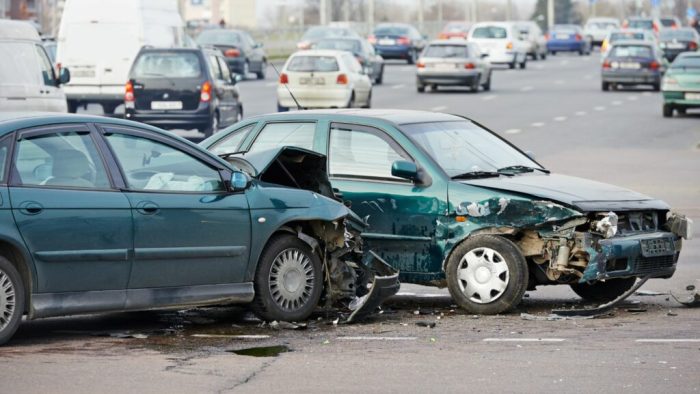Sideswipe collisions are the most damaging type of collision – Sideswipe collisions, often overlooked yet highly dangerous, are the most damaging type of collision. This article delves into the characteristics, injury patterns, contributing factors, and safety measures associated with sideswipe collisions, providing a comprehensive understanding of their devastating impact.
The dynamics of side-impact crashes, influenced by vehicle design and the forces involved, play a crucial role in determining the severity of injuries. Common injury patterns in sideswipe collisions include head, neck, and chest trauma, highlighting the need for effective occupant protection systems.
Side-Impact Collision Characteristics

Side-impact collisions, also known as broadside collisions or T-bone crashes, occur when the side of a vehicle is struck by another vehicle. These collisions are particularly dangerous due to the limited protection provided by the vehicle’s side structure compared to the front and rear.
The physics of side-impact collisions involves a combination of linear and rotational forces. Upon impact, the struck vehicle experiences a lateral force that causes it to deform and rotate. The severity of the collision depends on factors such as the speed and angle of impact, as well as the weight and size of the vehicles involved.
The design of vehicles plays a crucial role in determining the severity of side-impact collisions. Vehicles with reinforced side structures, side impact beams, and airbags provide better protection for occupants by absorbing impact energy and preventing intrusion into the passenger compartment.
Injury Patterns in Side-Impact Collisions
Side-impact collisions often result in severe injuries due to the lack of side protection and the high forces involved. Common injury patterns include:
- Head injuries, including traumatic brain injury (TBI) and skull fractures
- Neck injuries, such as whiplash and spinal cord damage
- Chest injuries, including rib fractures and internal organ damage
- Pelvic injuries, such as fractures and dislocations
- Lower extremity injuries, including leg fractures and amputations
The prevalence of specific injuries in side-impact crashes depends on factors such as the severity of the collision, the location of the impact, and the occupant’s position and restraints.
Factors Contributing to Side-Impact Collision Severity

Several factors contribute to the severity of side-impact collisions, including:
- Speed and impact angle:Higher speeds and greater impact angles result in more severe collisions.
- Vehicle weight and size:Heavier and larger vehicles provide better protection for occupants than lighter and smaller vehicles.
- Environmental factors:Road conditions, such as slippery surfaces or poor visibility, can increase the risk of side-impact collisions.
Safety Measures to Mitigate Side-Impact Collisions: Sideswipe Collisions Are The Most Damaging Type Of Collision

Various safety features are designed to reduce the severity of side-impact collisions and protect occupants, including:
- Airbags:Side airbags inflate to provide a cushion between the occupant and the side of the vehicle.
- Side impact beams:Reinforced beams in the vehicle’s doors and pillars absorb impact energy and prevent intrusion into the passenger compartment.
- Reinforced door structures:Stronger door structures provide better protection against side impacts.
- Advanced driver assistance systems (ADAS):Features such as blind spot monitoring and lane departure warning can help prevent side-impact collisions.
Clarifying Questions
What factors contribute to the severity of sideswipe collisions?
Speed, impact angle, vehicle weight and size, and environmental conditions all play a significant role.
Why are side-impact collisions often more damaging than other types of crashes?
The lack of crumple zones and the direct transfer of force to the occupants make side-impact collisions particularly dangerous.
What are some effective safety measures to reduce the severity of sideswipe collisions?
Airbags, side impact beams, reinforced door structures, and advanced driver assistance systems (ADAS) can significantly mitigate the impact.